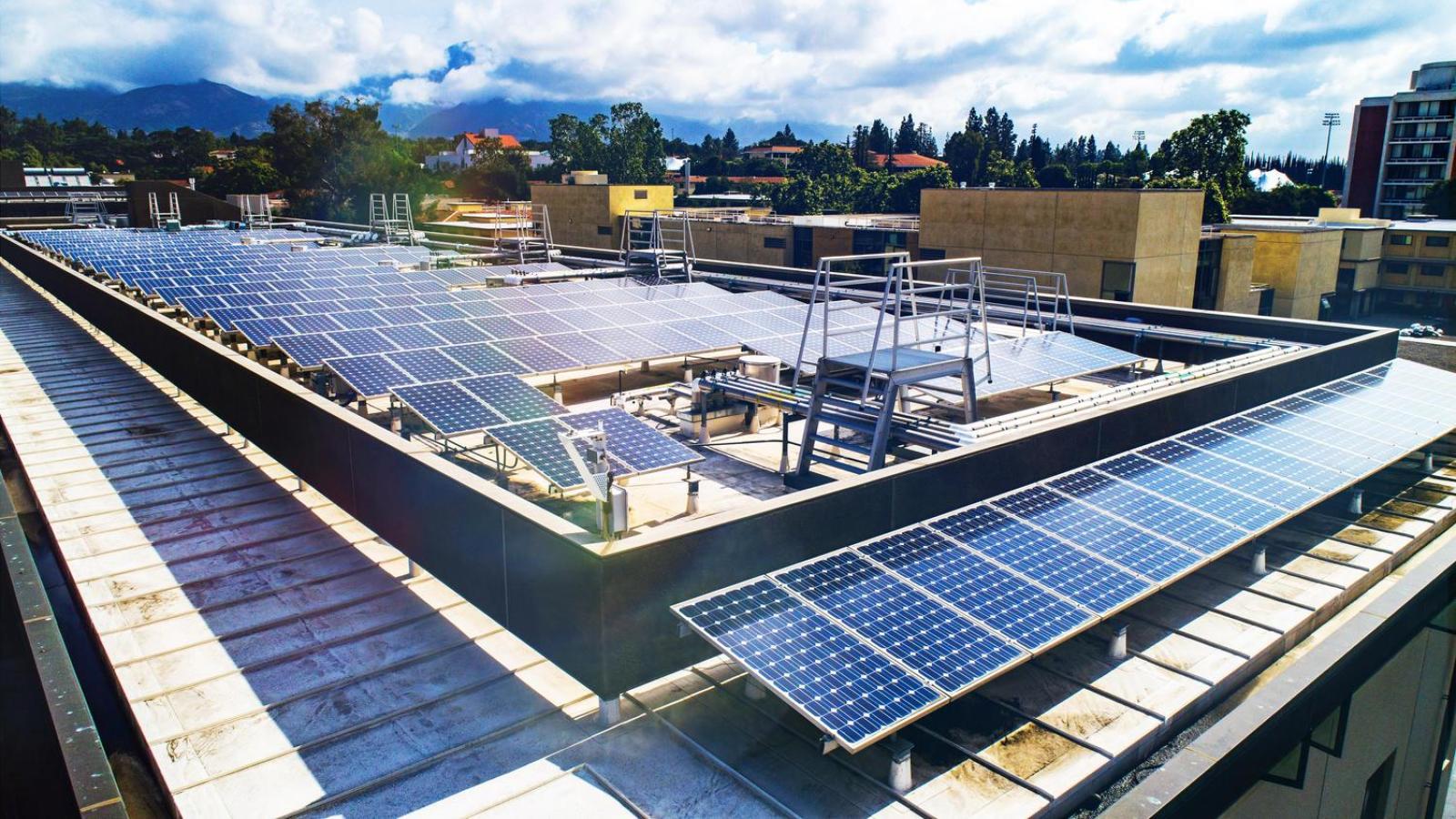As Pomona College addresses some of the grand challenges facing the world—a key focus of its Strategic Vision—it is making progress toward its sustainability goals and commitment to be carbon neutral by 2030.
Results are documented in the recently published 2023 SAVE (Sustainable Action Visible Effects) annual report, which assesses efforts in nine areas such as reduction of greenhouse gas (GHG) emissions, water use, energy and waste to landfill. The report is produced by the College’s Office of Sustainability.
A Record Drop in Waste
Two areas saw particularly significant improvement this year. Overall waste was the lowest on record during a fully on-campus year. It was down 53% over 2014, the year selected as the baseline for measuring progress. Of the College’s 578 tons of waste, 52% was diverted from landfills through recycling, composting, reuse and donation efforts. For example, students are composting more food waste in the dining halls, resulting in a 9% increase from the baseline in food waste diversion to a composting facility that produces an organic-grade product to use in agriculture.
Water Conservation Success
Pomona also has made remarkable progress since 2014 in reducing water use. An exceptionally rainy winter in 2022-23 meant that no irrigation was needed in non-athletic field parts of campus for nearly six months. Last year, thanks to student initiatives and the support of the grounds staff, almost 17,000 square feet of thirsty grass was transformed to water-friendly landscape, which will save 600,000 gallons of water each year. Mulch made from landscape trimmings is spread throughout the campus to help the ground retain more of the water it absorbs. And only Southern California native plants are purchased for the campus whenever possible, with a positive impact on water conservation.
“Pomona’s progress towards its sustainability goals is the result of collaboration across the college,” says Alexis Reyes, director of sustainability and energy. “But more collaboration is needed to tackle the complex challenges of climate change.”
Addressing Rising Energy Use
The COVID-19 campus closure resulted in a dramatic reduction in the use of energy by the College community, a situation that turned around with the full reopening of the campus in 2022. A long, hot summer and a cold winter nudged up the use of gas and electricity by 15% between 2022 and 2023. Use of gas increased by 21% and electricity by 9%. Longer commutes by faculty and staff and the return of air travel for International and Domestic Programs (IDP), along with travel for research and conferences, also increased the College’s greenhouse gas emissions.
New Solar Panels on the Way
Efforts are under way in several areas of campus to increase energy efficiency and renewable energy sources. Eight locations already have solar panels, and the college plans to install solar at Frank Dining Hall and the Center for Athletics, Recreation and Wellness (CARW) during this academic year. These upgrades will take place during winter break to minimize disruption.
In addition, retrofitting for energy-efficient LED lighting took place across campus during the summer. More efficient scheduling of heating and air conditioning is also under study. And in Frary Dining Hall, a gas-powered boiler is being reprogrammed to optimize efficiency in temperature set-points and heating/cooling schedules. New construction on campus, such as the recently renovated Athletics center, is designed to meet standards for LEED certification to provide ongoing energy savings.
Using Carbon Offsets Responsibly
Sustainability has been a focus at Pomona for decades, and in 2006 the President’s Advisory Committee on Sustainability was established to promote the earth-friendly use of resources by the campus community. In 2014, the College committed itself to the goal of achieving carbon neutrality by 2030 (CN2030). Members of the Board of Trustees signaled strong support of the effort and created a subcommittee, comprised of trustees, faculty, staff and students, to develop a strategy for meeting the goal. That group began meeting in early 2022
In an initial report issued in May, the subcommittee projected that by 2030, the College could conservatively project a reduction in greenhouse gas emissions of 46%, thanks to improvements in infrastructure and operations. Largely because of necessary travel, getting the rest of the way to carbon neutrality is likely to involve purchase of high-quality carbon offsets. The Office of International and Domestic Programs already has begun using offsets, and all of its flights in the last fiscal year were carbon neutral.
These offsets, however, will only be used to cover any gaps remaining after all efforts to reduce greenhouse gas emissions have been undertaken. “While the College has made significant progress toward our commitment, this next phase will require even stronger actions that prioritize direct reductions in carbon emissions across our campus,” says Jeff Roth, vice president, chief operating officer and treasurer.
The subcommittee recommended that a permanent seven-member Carbon Offset Committee be created made up of faculty, staff and students. The new committee would research, select and purchase carbon offsets that are verifiable and that permanently lower the amount of carbon dioxide in the atmosphere. A pilot project now underway will offset air travel by IDP and the Office of Admissions.
